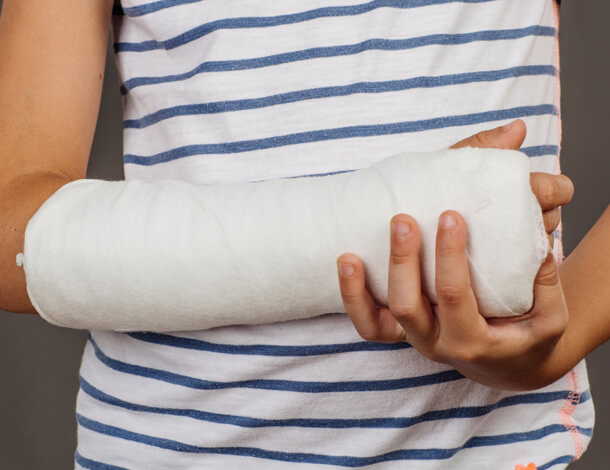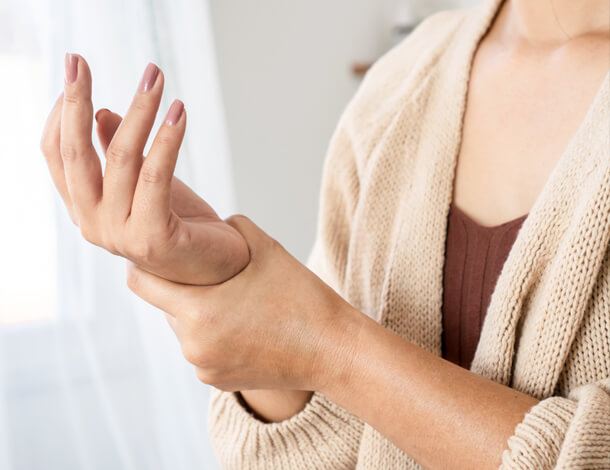Pain After Limb Amputation: What Causes Stump Pain and How Can I Treat It?

Stump pain, or residual limb pain, is common, affecting more than 75% of people who have undergone an amputation.
Stump pain can be mild for some but debilitating for others, creating a need for strong pain medicines and increasing the risk of addiction. This residual pain can also make it more challenging to use prosthetics, limiting their mobility and even causing emotional distress.
This article covers some of the most common causes of residual limb pain and how it can be managed and treated so you or your loved one can live a fuller life with less pain.
What Is Stump Pain?
Residual limb pain refers to pain that originates at the site where a limb was removed (or, as some call it, the “stump”). There are several potential causes of stump pain, with varying levels of severity. It is often confused with another condition many people who have had an amputation experience called “phantom limb pain.”
What’s the Difference Between Residual Limb Pain and Phantom Limb Pain?
“Phantom limb pain” or “phantom limb sensations” occur when mixed signals happen between a person’s spinal cord and brain after an amputation.
After a limb is removed, some of its nerve connections to the brain are still in place, which can cause the brain to misinterpret the signals it receives. Those nerve signals can cause a person to feel “phantom” sensations like burning, tingling, numbness, or pain where their limb used to be.
Unlike phantom limb pain, stump pain occurs at the actual site of the amputation and may or may not be nerve-related.
What Does Stump Pain Feel Like?
Some people feel pain after an amputation in a single spot or notice it radiating around the remaining area. In some cases, the pain can cause hypersensitivity, making even a light touch—like when putting on clothes or covering up with a blanket—very uncomfortable.
The way patients experience stump pain can vary depending on cause and severity. Some of the most common descriptions of this pain include:
- Throbbing
- Burning
- Squeezing or pressing
- Zinging or zapping
- Stabbing
Causes of Stump Pain After Amputation
Residual limb pain can be related to the amputation itself or can be caused by a condition that occurred before or after the surgery.
While residual limb pain often resolves within the first few weeks after amputation, some patients will experience persistent pain and need further diagnosis and treatment.
Examples of common causes of stump pain include:
- Infections
- Poor blood supply
- Problem with the fit of a prosthesis
- Skin conditions
- Surgical trauma
- Growth or tumor
- Poor tissue coverage at the end of the bone
- Entrapment of nerves in the scar tissue
- Peripheral nerve neuroma
What Is a Peripheral Nerve Neuroma?
A peripheral nerve neuroma, often simply called a “neuroma,” is an abnormal growth of nerve tissue that occurs at the end of a cut peripheral nerve.
Imagine a cut cord with wires inside trying to join back together but getting all tangled up. A neuroma is like those tangled wires but inside our body. When a nerve in our body gets cut, it will try to grow back but, during that process, the nerve can end up like a messy knot. That “knot” is called a neuroma.
What Causes a Neuroma to Form After Amputation?
Sometimes, after a part of the body (like an arm or finger) is removed, a nerve cut during the amputation will try to grow back but end up forming a neuroma.
This is why some patients will feel pain (like a pinch or hot, burning sensation) in their stumps, or where their limbs were removed. Additionally, as mentioned earlier, sometimes when a prosthetic is too tight and has a poor fit, it can press on your stump and make a neuroma hurt even more.
When Should I See a Doctor?
When stump pain doesn’t go away on its own, it’s essential to see a nerve specialist as soon as possible. They can get to the bottom of what’s causing your pain and develop a treatment plan to give you the relief you deserve.
Diagnosing Stump Pain
When you see a physician about your residual limb pain, they will first examine the area and look for any visible problems with your skin or bones. They will also check the residual limb for any masses or signs of infection. They may also tap around the area to check for signs of neuroma (a tangle of nerve endings that can form post-amputation).
A nerve pain doctor may order an MRI, CT scan, X-ray, ultrasound, or blood test to rule out some potential causes of pain, like a fracture, bone bruise, tumor, or infection. Once they have officially diagnosed what’s happening, your nerve pain specialist will discuss all available treatment options.
Options for Stump Pain Management
If you see a nerve specialist, they may first recommend conservative therapies and treatments for residual limb pain, such as:
- Over-the-counter pain relievers
- Physical or occupational therapy
- Massage
- Prosthesis fitting (to ensure maximum comfort, fit, durability, stability, and control)
If you see a pain specialist about your discomfort, they may prescribe:
- Antidepressants (to relieve pain caused by nerve damage)
- Anticonvulsants (also used to minimize nerve-related pain)
- N-methyl-D-aspartic acid (NMDA) agonists (which is applied to the skin)
How Can a Nerve Specialist Help With Stump Pain Caused by a Neuroma?
In some cases, over-the-counter medicine can help minimize stump pain from a neuroma. If this doesn’t work, a nerve pain doctor might recommend a stronger medicine or that you try doing special exercises designed to lessen your pain.
For some patients, a specialist may recommend surgery.
Surgical Treatments for Stump Pain
Some causes of stump pain are treated most effectively with surgery. An experienced nerve surgeon can perform:
- Targeted Muscle Reinnervation: This procedure involves rerouting cut nerves into underutilized muscles. It can significantly decrease pain and increase the use of specialized prostheses controlled by electrical signals in the muscles.
- Soft Tissue Coverage: In some cases, bone, scar, nerve, or unhealthy tissue may need to be covered or realigned to facilitate a stable limb that can effectively interface with a prosthesis.
Beyond this general list of surgical treatments, there are a number of additional neuroma management strategies, including:
- Regenerative Peripheral Nerve Interface (RPNI): This is a novel surgical technique that involves implanting the divided end of a peripheral nerve into a free muscle graft to prevent neuromas and improve prosthetic limb control.
- Nerve Capping (Nerve End Capping): This procedure involves sealing or covering the cut end of a peripheral nerve, typically after a surgical amputation or traumatic injury to reduce the risk of neuroma formation and decrease pain.
- Pedicled Vascularized RPNI (vRPNI): In this modification of the traditional RPNI procedure, instead of using free muscle tissue, a piece of muscle with its blood supply intact is used.
- Vascularized, Denervated Muscle Targets (VDMTs): This surgical approach—which provides a high-fidelity signal for prosthetic control while simultaneously preventing and treating neuroma pain—was designed to improve the interface between residual peripheral nerves and prosthetic devices, especially in patients who have undergone limb amputations.
Burying the Cut Nerve in Muscle or Bone: With this technique, a surgeon will typically trim away any scarred or damaged tissue from the cut end of a nerve at risk for forming a neuroma (or that is already forming a neuroma), creating a healthy environment for the nerve to heal, away from external stimuli.
Will My Stump Pain Ever Go Away?
While residual limb pain will often go away on its own after a few weeks, that’s not the case for everyone. But with proper treatment, you can reduce pain, improve prosthetic use, and decrease the need for addictive narcotics.
To improve the likelihood of a successful outcome, seek care as soon as possible. The sooner treatment begins after amputation, the better your chances of success.
Treating neuromas or potential neuromas during or around the initial amputation can diminish phantom limb sensations (or prevent them from developing).
Visit Indiana Hand to Shoulder Center’s Nerve Clinic
The Nerve Injury and Limb Pain Program at IHTSC is dedicated to helping those who have experienced loss due to trauma or amputation of the upper and lower extremities.
If you suffer from stump pain, schedule an appointment with our nerve pain experts. We will evaluate your condition and determine if you’re a candidate for any of our clinic’s effective techniques, therapies, and treatments.



